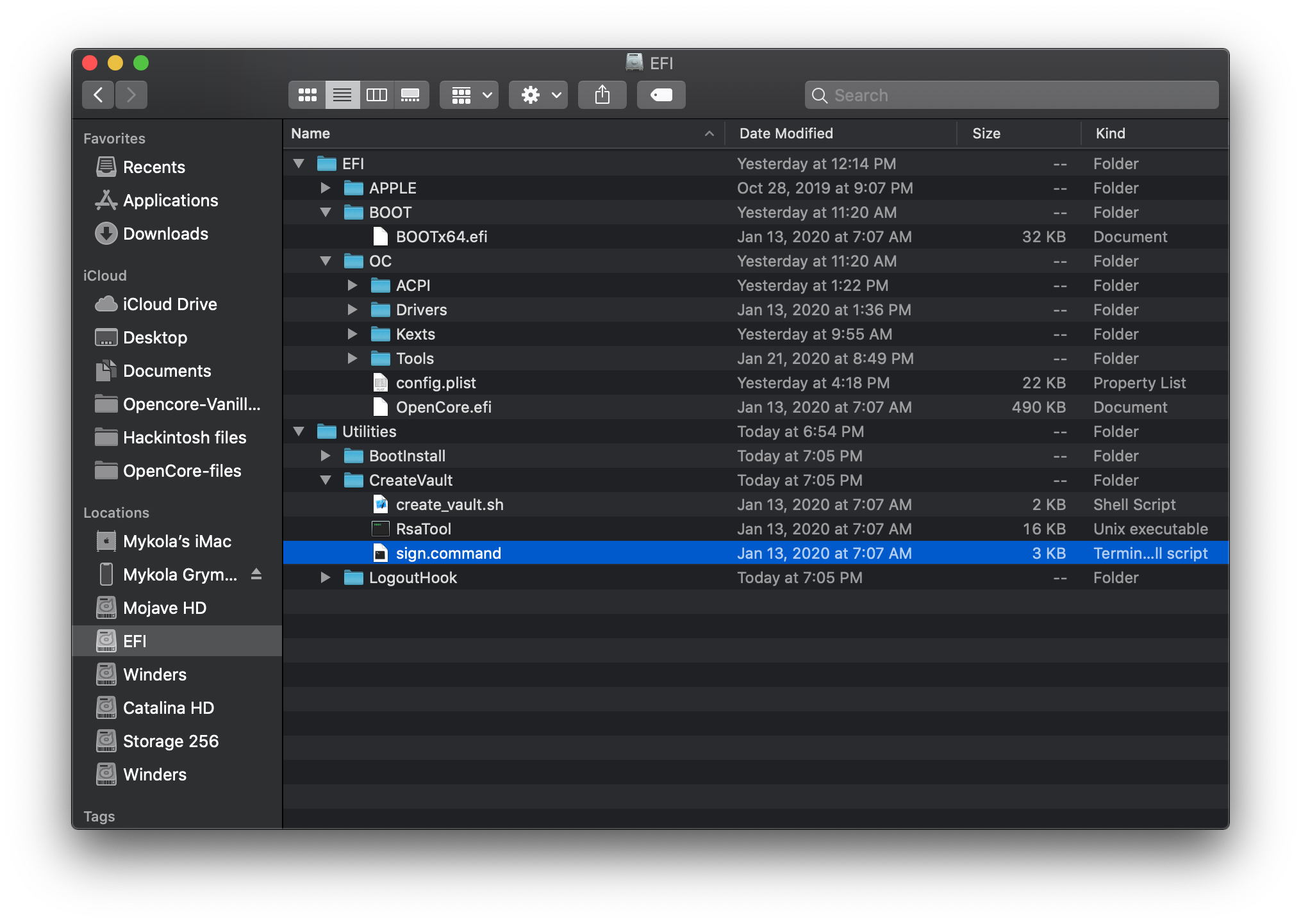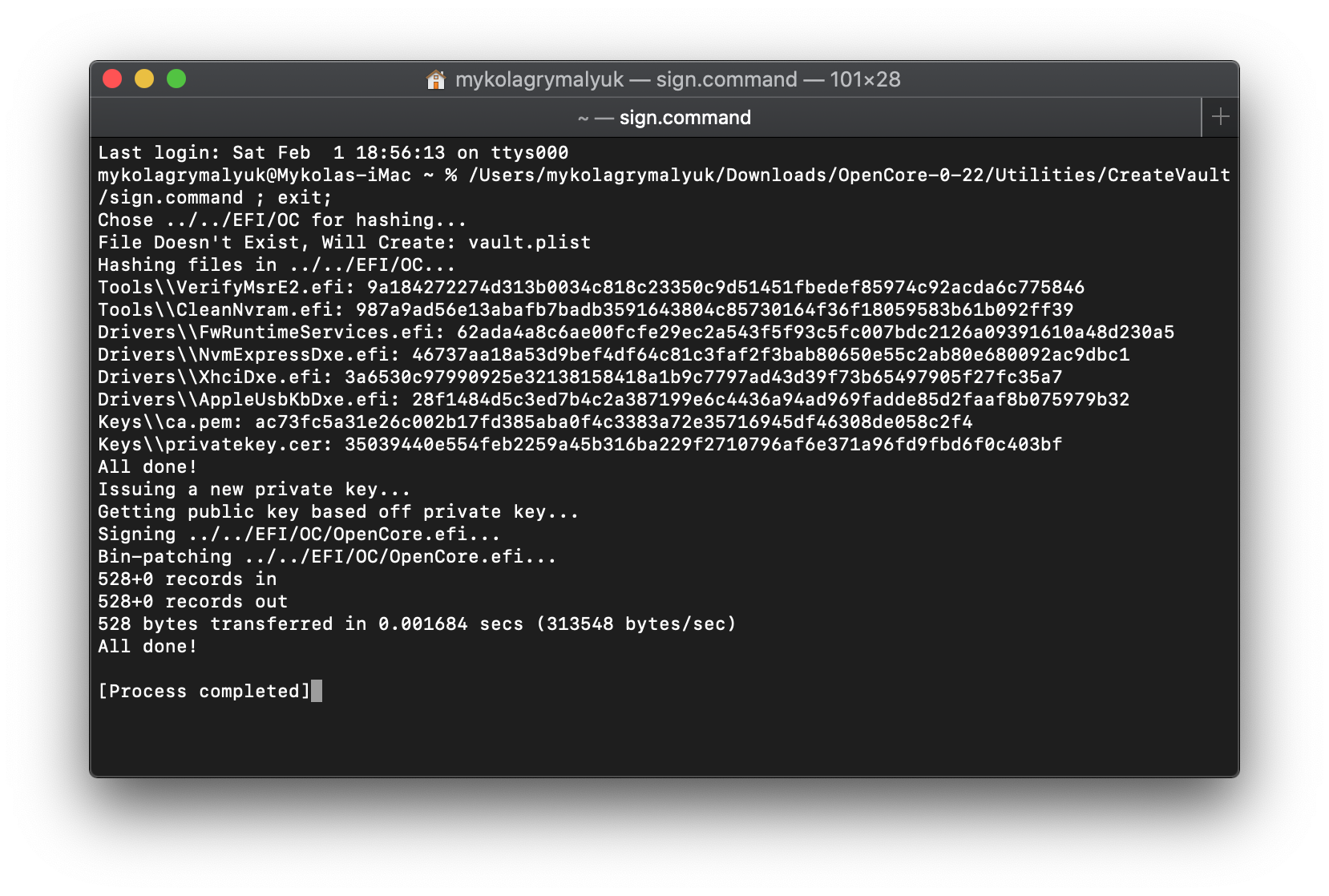Vault
What is vaulting?
Well vaulting is based around 2 things, vault.plist and vault.sig:
- vault.plist: a "snapshot" of your EFI
- vault.sig: validation of vault.plist
This can be seen as secure boot for OpenCore, so no one can modify it and get in without your permission.
The specifics of vaulting is that a 256 byte RSA-2048 signature of vault.plist will be shoved into our OpenCore.efi. This key can either be shoved into OpenCoreVault.c before compiling or with sign.command if you already have OpenCore.efi compiled.
Do note that nvram.plist won't be vaulted so users with emulated NVRAM still have risk of someone adding/removing certain NVRAM variables
Setup
Settings in your config.plist
Misc -> Security -> Vault:Basic: Requires just vault.plist to be present, mainly used for filesystem integrity verificationSecure: Requires both vault.plist and vault.sig, used for best security as vault.plist changes require a new signature
Booter -> ProtectSecureBoot:YES- Needed with Insyde firmwares for fixing secure boot keys and reporting violations
Setting up vault
Grab OpenCorePkg and open the CreateVault folder, inside we'll find the following:
create_vault.shRsaToolsign.command
The last one is what we care about: sign.command
So when we run this command, it'll look for the EFI folder located beside our Utilities folder, so we want to bring either our personal EFI into the OpenCorePkg folder or bring Utilities into our EFI folder:

Now we're ready to run sign.command:

Disabling Vault after setup
If you're doing heavy troubleshooting or have the need to disable Vault, the main things to change:
- Grab a new copy of OpenCore.efi
Misc -> Security -> Vaultset to Optional- Remove
vault.plistandvault.sig
